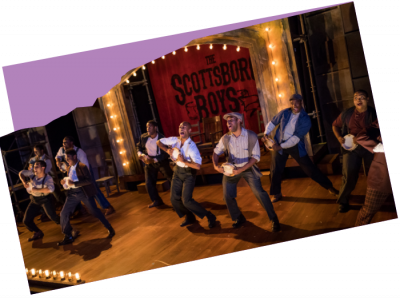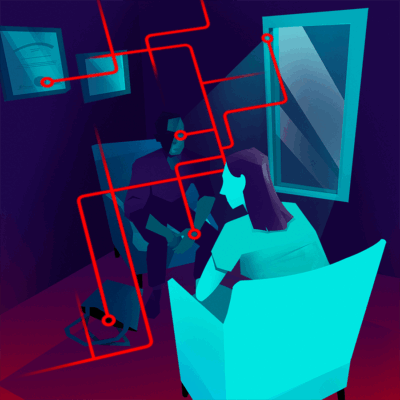Your donation sets the stage for a new season of Boston's most intimate, entertaining and provocative plays and musicals. Our shows make powerful connections with our audiences-- and they are only possible because of you.
Race and the City: Chicago
Race and the City: Chicago
Race and the City: Chicago

This is an excerpt of an article that first appeared in 2011 inWords on Plays, the performance guide series of San Francisco’s American Conservatory Theater (A.C.T.). Dan Rubin is the editor of Words on Plays and A.C.T.’s publications manager.
Issues of gentrification are inextricably linked to issues of race. Mid-20th-century white flight saw the dispersal of cities’ white populations as communities of color moved into segregated urban neighborhoods. Brokers, practicing what was known as blockbusting, took advantage of racial prejudice. Convincing white homeowners that the value of their property would plummet as African American families moved into the community, these brokers scared them into selling their homes for less than their worth by predicting that it was still more than they would get if they waited. The brokers would then make a profit by selling the properties at market price to African American families eager to escape their overcrowded, impoverished neighborhoods. Areas that had been predominantly European throughout a city’s history quickly became almost entirely populated by people of color.
This was the case with the Washington Park neighborhood of Woodlawn after Lorraine Hansberry’s family purchased a building at 6140 S. Rhodes Avenue in 1937. Woodlawn became an attractive haven for middle-class African American families looking to escape Chicago’s Black Belt—one of two areas to which the city’s African American population had been restricted as their numbers burgeoned to nearly 300,000 as a result of the Great Migration. World War II’s promise of industrial jobs brought the Second Great Migration, and Woodlawn received recent southern migrants and lower-class refugees displaced from redevelopment elsewhere in Chicago. By 1960, Woodlawn was 89 percent African American. By this time it also had “deteriorating, crowded housing and few commercial attractions,” according to the Chicago Historical Society. Gangs arrived. “A rash of arsons destroyed a reported 362 abandoned buildings between 1968 and 1971. Unemployment, poverty, and crime climbed. Those who could afford to, moved out: Woodlawn’s population declined from a high of 81,279 in 1960 to 27,086 in 2000.” After decades of disinvestment, poverty, and high vacancy rates, Woodlawn seems primed for gentrification.
Gentrification is most often associated with white residents returning to established minority enclaves, pushing out people of color. A prevailing theme of interviews conducted in 2006 by Loyola University Chicago’s Center for Urban Research in four Chicago neighborhoods is that different race-based values and lifestyles “contribute to tensions, conflict, and hostility” in gentrifying communities. “There’s incredible racist overtones in this entire process. It’s not just a matter of housing and money necessarily, but also it operates on the realm of ideas and perceptions about this community, about Puerto Ricans, about blacks, about Mexicans, about what development should mean and what revitalization means,” a Latino Youth Community Organization representative from Chicago’s West Town neighborhood told the interviewers.
Significant gentrification has not yet occurred in Woodlawn, but it has begun just to the north in the historic district of Bronzeville, once a thriving commercial strip and cultural center at the heart of the Black Belt. With the recent demolition of public housing, construction on vacant lots, and rehabilitation of homes by resident middle-class African Americans, property values increased by 400 percent between 1999 and 2006. In the face of changing tides, community leaders are eager to preserve their history, the Loyola study reports, but aren’t as worried about losing their neighbors. Displacement is not of primary concern in Bronzeville because the gentrification process there started with an abundance of(continued)vacant space. The same was not true of West Town, another area where African American families historically found homes but which is more associated with the city’s Puerto Rican and Hispanic population.
The history of West Town—just west of Chicago’s thriving downtown Loop, the city’s commercial center—is a quintessential gentrification tale, which may be why Bruce Norris sets Clybourne Park in “the near northwest of central Chicago.” The area (which contains Wicker Park, Humboldt Park, and Ukrainian Village) was originally settled by a diverse group of immigrants—Germans, Scandinavians, Poles, Russian Jews, Italians, and Ukrainians. Coinciding with the post–World War II housing shortage, it became primarily a port of entry for Latinos (mostly Puerto Ricans) and Mexicans, who had been displaced by the revitalization of the Lincoln Park and Old Town neighborhoods north of the Loop. They comprised 39 percent of West Town’s population by 1970. Turn-of-the-century mansions were converted into multifamily units and rooming houses as the area’s poor and working-class residency grew. African Americans first settled in the area in the 1930s, and their numbers grew in the 1970s with the construction of the Noble Square Cooperative and other subsidized housing in the vicinity. Between 1960 and 1980, the area’s white population decreased from 98 percent to 55 percent, with many moving to the northwest edge of the city or the suburbs.
Slum landlords let their properties fall into disrepair, and incidents of arson and insurance fraud were prevalent. Property values plummeted and speculators acquired properties for cheap. With the backing of these investors, the redevelopment process picked up in the 1980s, starting with the Wicker Park neighborhood.
At the turn of the 21st century, “West Town was changing again,” writes the Chicago Historical Society:
The influx of artists, students, and other younger “bohemian” populations drew more affluent residents…This gentrification subsequently spread…with restaurants, nightclubs, and shops near the cultural landmarks and institutions created and sustained by earlier residents. The various Latino groups remained a clear majority into the early 1990s but fell to 47 percent by 2000. Lower- income residents of West Town have moved to areas further north and west to escape the area’s rising real-estate values.
Between 1990 and 2000, West Town property values rose by 83 percent on average. The white population increased from 27 percent to 39 percent. A University of Illinois at Chicago (UIC) study entitled “Gentrification in West Town: Contested Ground”:
Quite often representatives of the forces of gentrification explained their actions in racial terms—it is not that they are taking the area away from a group but that they are doing some type of recovery and civilizing of the area that deserves a better group and a better treatment. They talked about saving the area from (minority) low-income residents; they described their culture with negative connotations; they resented the nationalism of organizations representing them, and, generally, accused such organizations of protecting drug pushers and of promoting concentrations of poverty/social degradation. This type of language can be code for racial hostility. Similarly, they claim that Latinos did not welcome them in the neighborhood, allegedly because they were whites—rather than for reasons of displacement and racial exclusion. Not only the lower income Latinos and Blacks but also the middle class Latinos and Blacks point to racial hostility on the part of white newcomers.
 Past Productions
Past Productions JOB
JOB The Antiquities
The Antiquities Swept Away
Swept Away




